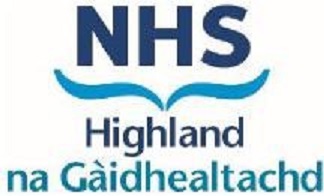| Abbreviation | Meaning |
| ECG | Electrocardiogram |
| QT | Q and T are 2 points on an electrocardiogram |
| BP | Blood pressure |
test announcement

Base selection on the likely cause, mechanism of action of the drugs available, the side-effect profile of each drug, interactions and concomitant conditions. The information table is not fully comprehensive, for further information refer to guidance below and/or BNF/manufacturers Summary of Product Characteristics:
|
DRUG CLASS/ ANTIEMETIC |
CAUTION/ CONTRA-INDICATIONS |
GOOD FOR NAUSEA CAUSED BY/OTHER USES |
|
|
ANTIHISTAMINES |
|||
|
CYCLIZINE |
Caution Severe heart failure or acute myocardial infarction; may counteract the beneficial haemodynamic effects of opioids. Anticholinergic** |
Movement, ↑ intracranial pressure, mechanical bowel obstruction, post-operative. |
|
|
PROMETHAZINEQT |
Caution Strongly anticholinergic** |
Movement |
|
|
PHENOTHIAZINES AND RELATED DRUGS |
|||
|
PROCHLORPERAZINEQT |
Caution Balance disturbances in older people; may often lead to drug-induced Parkinson’s disease, postural hypotension and mental confusion. Strongly anticholinergic** |
Contra-indication Prochlorperazine injection is considered inappropriate for patients with reduced consciousness due to its tendency to deepen any state of sedation. |
Movement, post-operative.
Buccal formulation available. |
|
LEVOMEPROMAZINEQT |
Caution Risk of postural hypotension; avoid in ambulant patients over 50 years, unless a risk of hypotensive reaction has been assessed. Anticholinergic** |
Palliative care. |
|
|
DOMPERIDONE AND METOCLOPRAMIDE |
|||
|
DOMPERIDONEQT
|
Caution Does not readily cross the blood brain barrier and less likely to exhibit extra-pyramidal effects and sedation compared with metoclopramide, however caution is still recommended in the young, very old and debilitated. Risk of cardiac side-effects; for short term use only (up to 7 days). |
Contra-indication Cardiac conduction is, or could be impaired, or where there is underlying cardiac disease, when administered concomitantly with drugs that prolong the QT interval or potent CYP3A4 inhibitors, and in severe impairment. Gastro-intestinal obstruction. |
Drug induced (eg emergency hormonal contraception, opioids, chemotherapy).
Only antiemetic advised for use in Parkinson’s disease.
Prokinetic. |
|
METOCLOPRAMIDEQT |
Caution in young, very old and debilitated, due to extrapyramidal effects. Risk of neurological side-effects (up to 5 days only). Anticholinergic** |
Contra-indicated in gastro-intestinal obstruction, post bowel surgery and in Parkinson’s disease. Avoid where emesis and melaena are present. |
Opioids and gastric/hepatic/biliary disease (not GI obstruction).
Prokinetic. |
|
5HT3 RECEPTOR ANTAGONIST |
|||
|
ONDANSETRONQT |
Caution Increased large bowel transit time; constipation can be a problem. |
Post-operative, radiotherapy and chemotherapy, palliative care. |
|
|
HYOSCINE |
|||
|
HYOSCINE HYDROBROMIDE |
Caution Sedation can be a problematic side-effect if driving or operating machinery. Strongly anticholinergic** |
Motion sickness, bowel obstruction, palliative care. |
|
|
OTHER |
|||
|
DEXAMETHASONE |
Caution if history of peptic ulcer disease/ concurrent NSAIDs. Monitor capillary blood glucose in patients with diabetes. |
Post-operative, chemotherapy, ↑ intracranial pressure. Appetite stimulant. |
|
|
HALOPERIDOLQT |
Caution Requires a baseline ECG prior to treatment and consider the need for ongoing ECG monitoring. Anticholinergic** |
For palliative care (opioid-induced and metabolic causes). |
|
|
LORAZEPAM |
Caution Addictive potential. |
Short-term use in anticipatory nausea and vomiting. |
|
QT Avoid in patients with congenital long QT interval. Prolongs QT interval and/or causes torsades de pointes.
See Credible Meds
** Consider the cumulative anticholinergic burden of all medicines. Anticholinergic side-effects include increased risk of urinary retention, falls, BP reduction, confusion, sedation, dementia, glaucoma etc.
(see http://www.uea.ac.uk/mac/comm/media/press/2011/June/Anticholinergics+study+drug+list).
| Abbreviation | Meaning |
| ECG | Electrocardiogram |
| QT | Q and T are 2 points on an electrocardiogram |
| BP | Blood pressure |